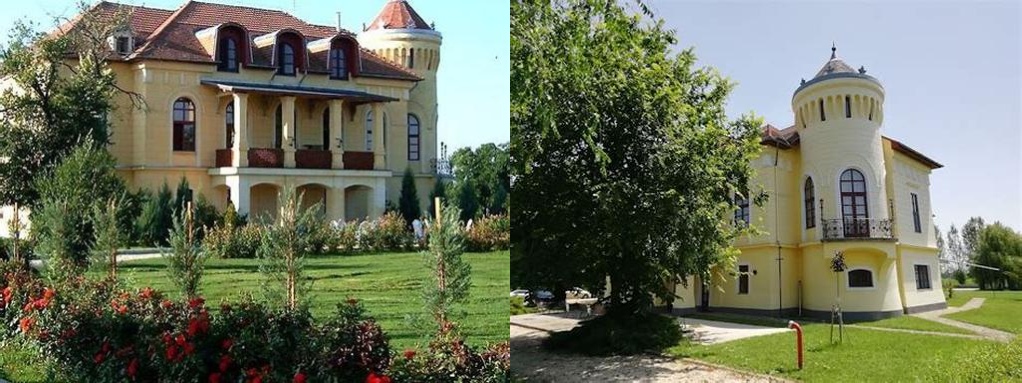
Almásy-kastély in Kétpó is a lesser-known gem among Hungary’s storied manors, quietly presiding amidst the tranquil flatlands of the Northern Great Plain. This isn’t your usual polished palace or bustling museum – rather, it feels like a secret thread weaving together the faded grandeur of a vanished age with the quietly persistent rhythm of the countryside. If you find yourself drawn to places with character, where history’s footprint is visible and yet not sterilised, Almásy Castle should absolutely be on your itinerary.
The roots of the castle thread back to the end of the 18th century when the Almásy family – a prominent lineage hugging the pages of Hungarian history – set about transforming the Kétpó estate, breathing stone and timber into existence among endless barley fields. It’s believed that the original structure was more hunting lodge than stately palace, built to serve both pleasure and business for the landed gentry. Through the 19th century, the manor witnessed steady expansions, eventually adopting the romantic, neoclassical lines you’ll see today. Although it’s not as flamboyant as some of its aristocratic cousins like Gödöllő Palace, this castle compensates with intimate charm and countless small, authentic details: plasterwork haunted with timeworn cracks, the whisper of ancient floorboards, and the occasional, crumbling remnant of an elegant past.
Despite a relatively modest scale (don’t come expecting Versailles), every room in Almásy-kastély exudes a certain melancholy dignity. The main building is framed by broad windows – perfect for catching the mellow pinks and golds of a low-lying Alföld sunset. And as you trace your fingers over the hand-carved balustrades, or gaze upward at faded ceiling frescos, you might start to imagine the dinners, intrigues, and everyday lives that once filled these tranquil rooms. The fact that the castle sits slightly apart from the more trodden tourist tracks only adds to its allure; stroll around for a while and you’ll likely spot more wild hares than visitors.
One of the quirks of Kétpó is that it still breathes with village rhythm. As you approach the castle, the air carries the scent of cut grass and the soundscape – the soft hum of bees, church bells in the distance – sets the tone for unhurried exploration. The castle is surrounded by a park that, though not as manicured as the grand estates closer to Budapest, displays a gentle, rambling beauty. You’ll find ancient oaks and chestnut trees whose canopies offer cool solace on summery days; wilder tangles where local birds find shelter; and winding pathways promising unexpected perspectives of the manor house. If you’re attentive, you’ll spot fragments of old fencing or ornamental statues peeping from the undergrowth – the sort of half-forgotten curiosities that bring stories alive.
The internal spaces retain echoes of their original function: salons that once buzzed with conversation, bedrooms layered with domesticated nostalgia, and larders that must have been well-stocked for elaborate banquets. While much of the castle bears the patina of time, some rooms have been gently restored, blending exposed brickwork with careful woodwork. The largest hall hosts occasional local events – concerts, exhibitions, and lectures – serving as a heart for artistic expression in Kétpó’s tight-knit community. If you visit during these happenings, you’ll find a lovely intermingling of eras as modern music mingles with the shadows of the past.
No account of Almásy Castle would be complete without mentioning the legendary tales that drift across its lawns. Local lore tells of secret underground passages (what old Hungarian manor doesn’t have these stories?), hidden alcoves that once concealed summer trysts, and the odd appearance of a lingering spectre or two in the moonlight. There’s something about these stories that makes even a solo afternoon stroll here feel adventurous, even slightly conspiratorial.
For practicalities, getting to Kétpó involves a gentle drive through sweepingly open countryside, with vast skies and the patchworked colors of fields guiding your every mile. The village itself is quiet but welcoming, its people proud of their connection to the manor and happy to share stories if you stop for a chat at the local café. Nearby, you’ll find traces of other historic landmarks, including old churches and a handful of rural museums, making this corner of Hungary ripe for discovery if you’re a fan of stepping off the main road.
In essence, a visit to Almásy-kastély is not about grandeur or opulent exhibits, but about the gentle resonance of history lived, felt, and preserved in a living rural community. For the traveler craving authenticity, slow beauty, and stories embedded in humble walls, this forgotten manor near the heart of the Great Plain stands with quiet pride, waiting to be discovered.





